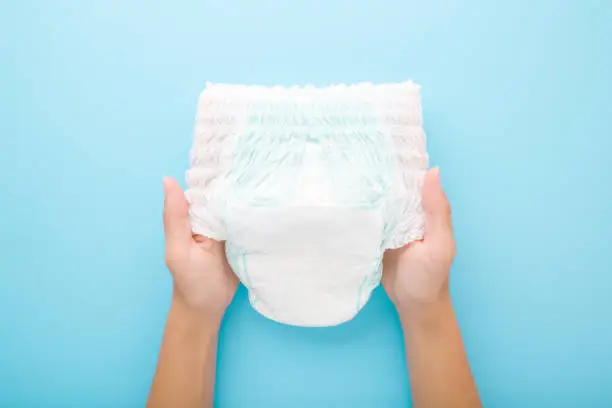Choosing the right diapers for your little one can be a daunting task. With the overwhelming number of options available in the market, many new parents are now focusing on “Eco Friendly Diapers” and “Safe Diapers for Babies”. But what exactly are these diapers made of? In this comprehensive guide, we delve into the world of environmentally friendly diapers, exploring their materials, benefits, and why they are a safer option for your baby.
What are Diapers Made of?
Diapers are composed of multiple layers, each designed to perform a specific function. Conventional diapers, for instance, typically consist of three primary components: an inner liner, an absorbent core, and an outer shell.
The inner liner or top sheet sits against your baby’s skin, designed to keep them dry by allowing liquid to pass through into the absorbent core. This core is typically made of wood pulp and a super-absorbent polymer (SAP) that locks away the moisture. Finally, the outer shell, often made of petroleum-based plastic, keeps the wetness inside the diaper.
While this design is efficient, it raises environmental and health concerns due to the use of non-biodegradable materials and potential skin irritation.
Introducing Eco Friendly Diapers
Environmentally friendly diapers aim to address these concerns by substituting harmful materials with more sustainable and safer alternatives. They are often free of harsh chemicals, fragrances, and petroleum-based plastics that could cause skin irritation, allergies, or diaper rash. Let’s break down some common materials you’ll find in Eco Friendly Diapers:
1. Bamboo: This rapidly renewable resource is often used in Eco Friendly Diapers due to its natural hypoallergenic and antibacterial properties. It’s also highly absorbent, which is a crucial attribute for any diaper.
2. Organic Cotton: As a natural fiber, organic cotton is gentle on your baby’s skin and highly absorbent. Unlike traditional cotton, organic cotton is grown without harmful pesticides and synthetic fertilizers, making it a safer option for your baby and the environment.
3. Biodegradable SAP: Some Eco Friendly Diapers use biodegradable SAP derived from wheat, corn, or wood pulp to boost absorbency. They perform just as well as synthetic SAPs but decompose faster.
4. Compostable or Biodegradable Plastics: Many eco-friendly diaper brands replace petroleum-based plastic with plant-based plastics or other compostable materials. These materials break down faster in the environment than conventional plastics.
Why Choose Eco Friendly Diapers?
Now that we know what Eco Friendly Diapers are made of let’s explore why they are considered “Safe Diapers for Babies” and a better choice for the environment.
1. Hypoallergenic and Gentle on Skin: Eco-Friendly Diapers often use materials that are gentler and safer for a baby’s sensitive skin. Since they are free from harmful chemicals and fragrances, they reduce the risk of diaper rash and other skin irritations.
2. Environmental Impact: Environmentally friendly diapers are made from sustainable resources and degrade faster than conventional diapers, reducing their environmental impact.
3. Transparent Manufacturing Processes: Many eco-friendly diaper brands are transparent about their manufacturing processes, providing parents with peace of mind about what’s in the products they’re using on their babies.
Making the Switch
Switching to Eco Friendly Diapers can seem daunting, but it’s an investment in your child’s health and the planet they’ll grow up in. Here are some tips to ease the transition:
1. Start Slow: Transition gradually. Start by using eco-friendly diapers at home and traditional ones when you’re out until you find a brand that you and your baby are comfortable with.
2. Trial Packs: Many brands offer trial packs. This allows you to try different types of Eco Friendly Diapers to see which ones your baby responds well to before investing in a bulk purchase.
3. Subscription Services: Some companies offer subscription services, which can make purchasing and trying out these diapers more convenient and less expensive in the long run.
4. Don’t Forget About Wipes: These Diapers are just the start. Look for biodegradable, unscented wipes made from sustainable resources to further reduce your environmental impact and protect your baby’s skin.
To conclude, the world of Eco Friendly Diapers is vast and growing. Understanding what these diapers are made of can help you make informed choices that benefit your baby’s health and contribute to a more sustainable world. Start your journey today towards a more conscious and caring parenting style with safe diapers for babies.


